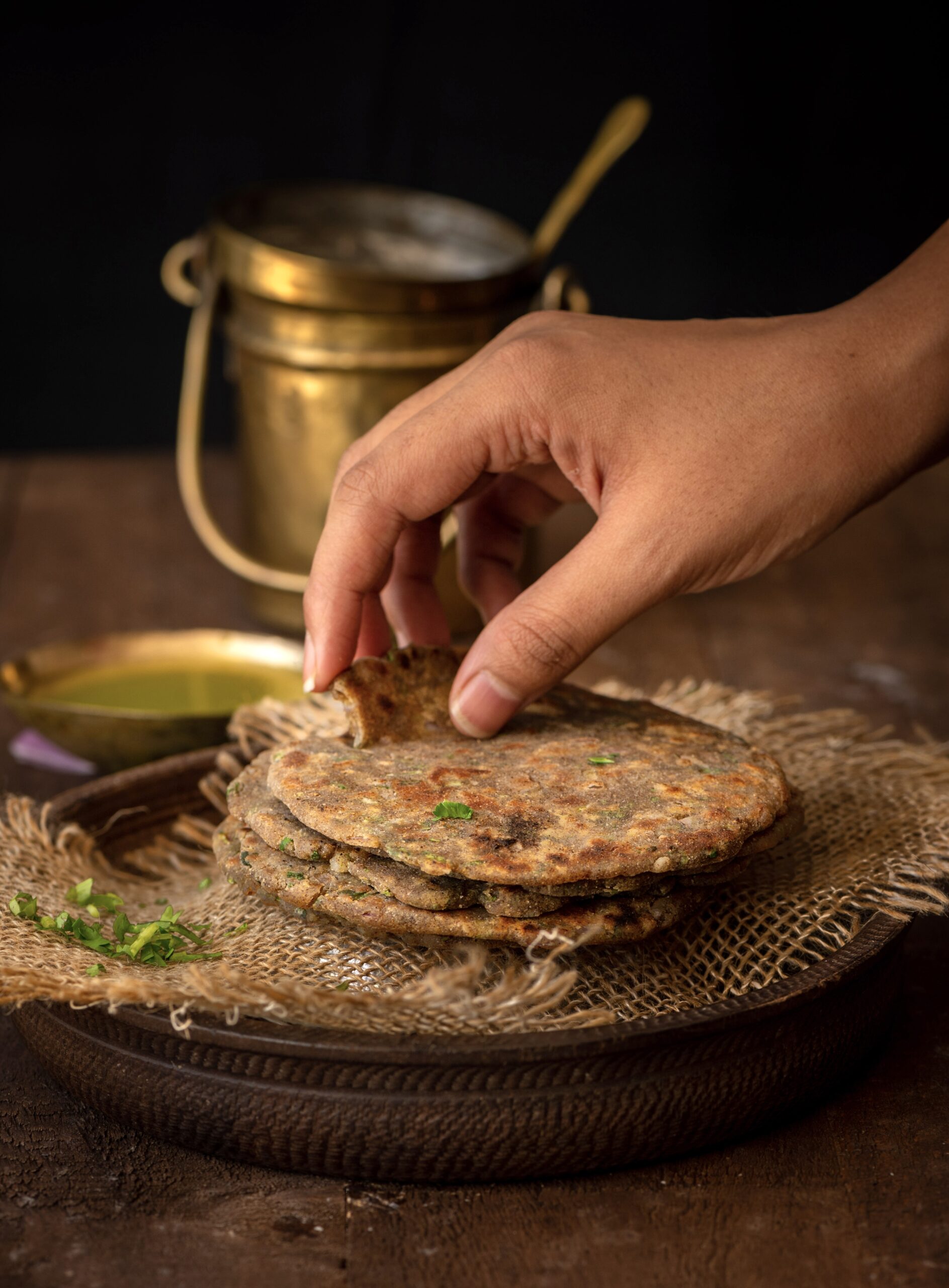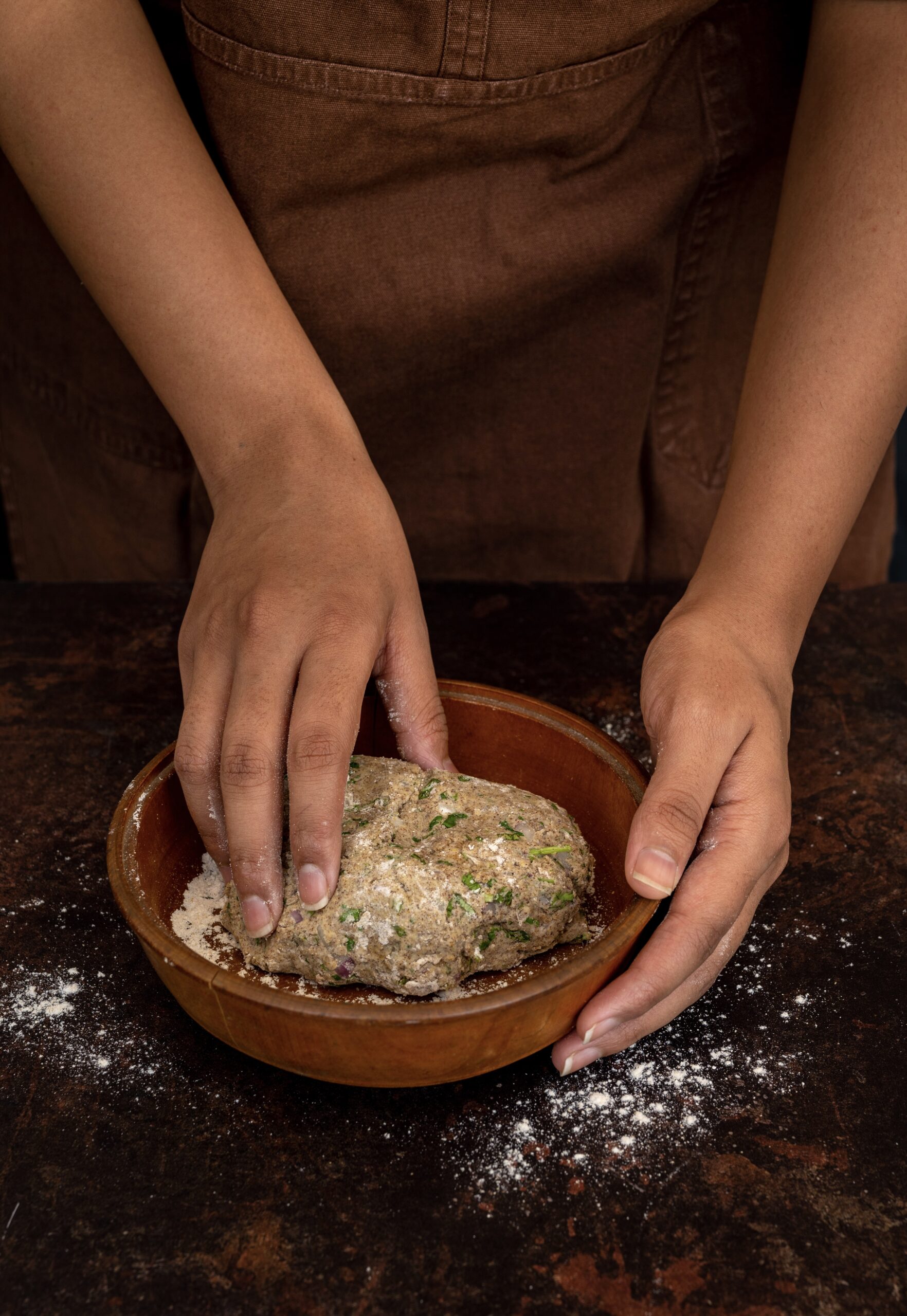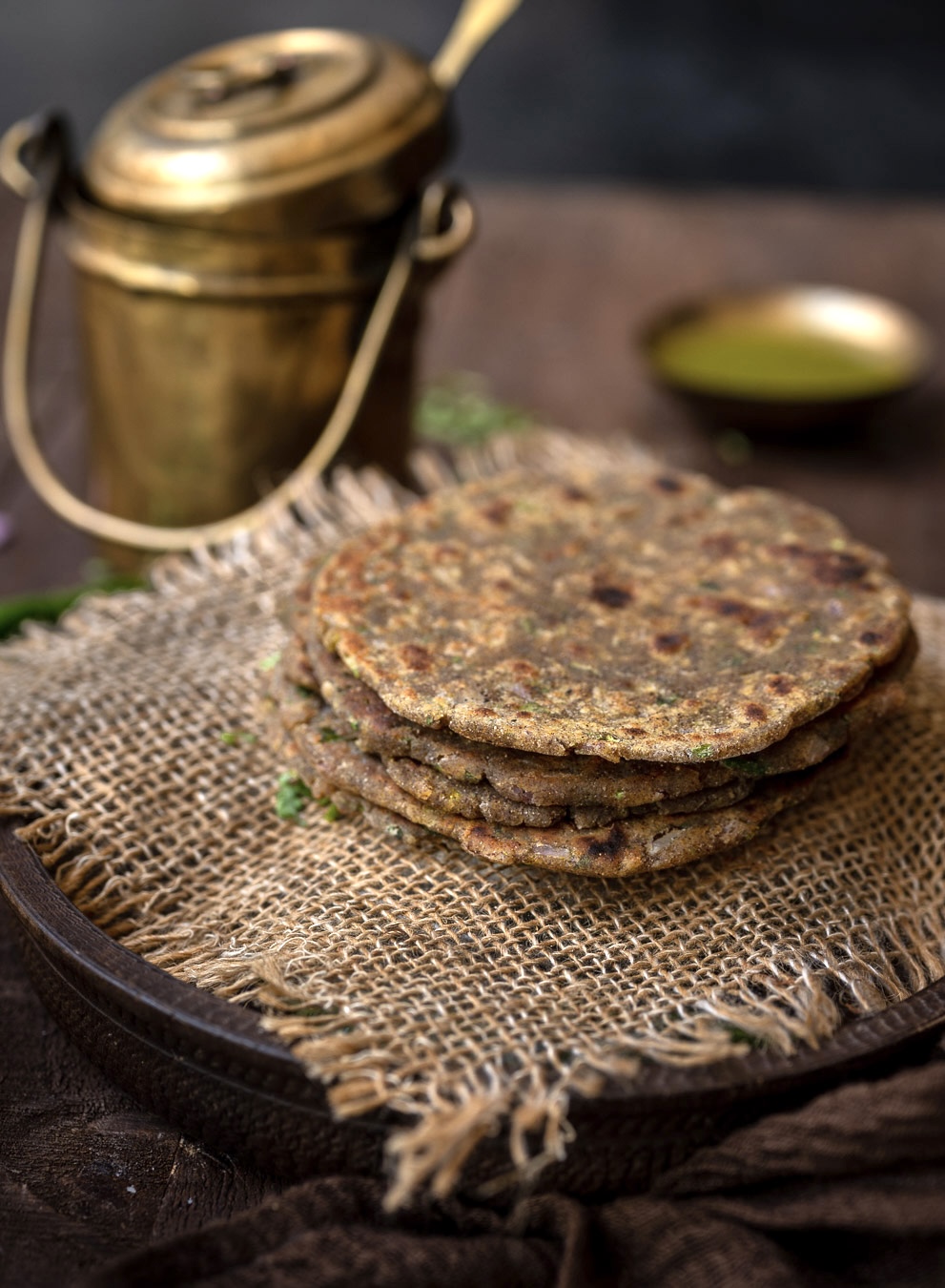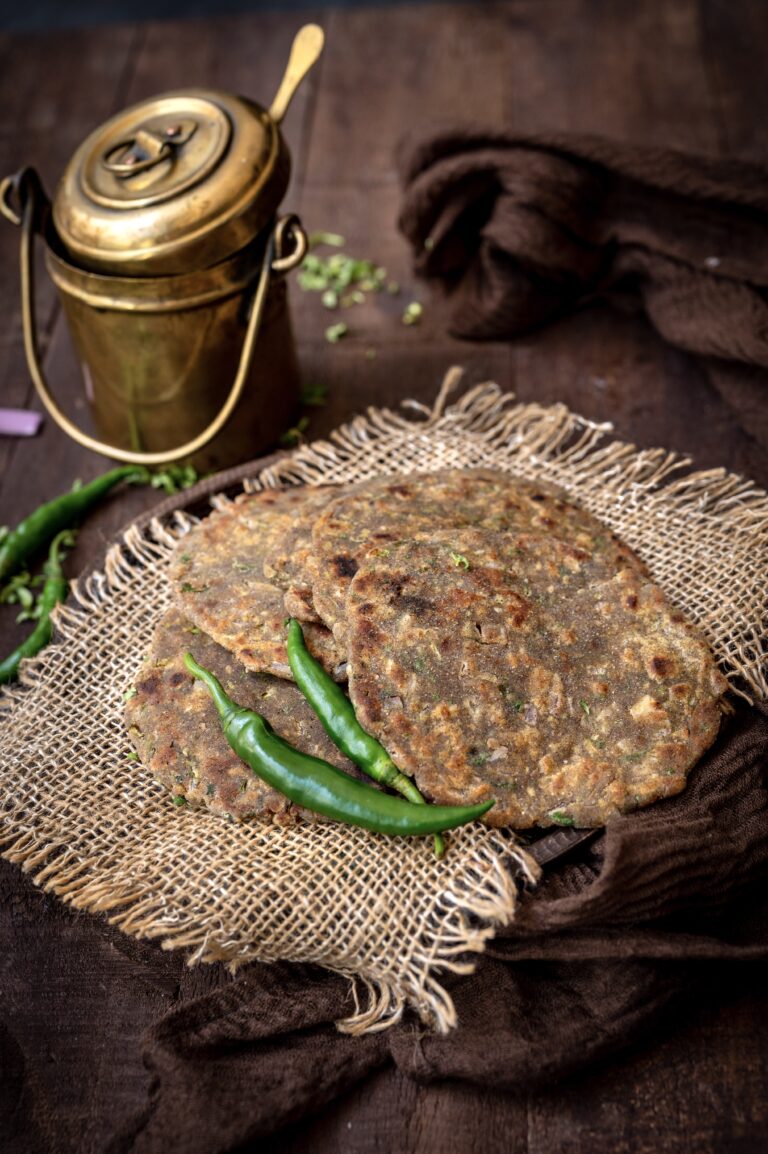This multi-grain flatbread, also known as chilla, is a kind of crepe that has made an appearance on this blog before in a chickpea avatar. This version, which uses a selection of different flours, is very similar to the thaali peeth from Maharashtra or the sathu maavu that is popular in South India. This is a rustic flatbread that is best consumed in monsoons as it takes longer to digest and gives an energy boost, but it is also perfect for me right now as I take a break from rice and wheat. It is a great way to enjoy my dals and veggies. It does contain a very small quantity of wheat as a binding agent, but this can be eliminated if you ensure that you roll out each piece very gently and delicately.
While I am cutting down on this ingredient, I do want to say that I think it’s sad and perhaps unfair that wheat has become a culinary culprit at late. Newer health concerns like celiac disease and gluten sensitivity, which were unheard of when I was growing up, are now much more widespread. On this note, I want to add that with the health and nutritional requirements of my customers in mind, I do offer a selection of gluten-free cakes. Vegan and sugar-free cakes are also on the re:store menu. Please explore our options and see what calls to you, and give me a call. I get a lot of enquiries about cakes that use artificial sweeteners, but I am still wary of those, so I haven’t accepted such orders. I would rather use a natural sweetener in small quantities, or eliminate it altogether.
I’ve used five different flours to prepare this dish. Feel free to use whatever is available in your home. In mine, since I prepare this quite frequently, I gathered together all the grains and had them milled together. In that sense, my flour mix is a homemade one. This is more convenient than reaching out for half a dozen jars each time I want to prepare a multi-grain flatbread. You can just store one jar instead, and use it for your regular consumption. Growing up, my mother made bajra rotlo quite a lot, but this is my own go-to. You can also prepare this in a thinner consistency, make it in an uthappam style and so on. Use the dough in your preferred way to create a flatbread.
I accompany this multi-grain flatbread with a simple vegetable sabzi or a dal, or sometimes just a pickle and some yoghurt, or even a chutney. There are multiple recipes for these accompaniments on these blog over the years, so I invite you to spend some time exploring the archives, following tags that interest you.

Multi-Grain Flatbread
(Yield: 6)
¼ cup besan flour
¼ cup rice flour
¼ cup ragi flour
¼ cup bajra flour
¼ cup wheat flour
½ teaspoon ajwain (carom seeds)
A handful of coriander leaves (finely chopped)
Salt to taste
½ teaspoon sesame seeds
A pinch of turmeric
1 tablespoon oil
2 tablespoons curd
1⁄3 cup finely chopped onions
Water as required

In a bowl. add all the flours, as well as salt and turmeric. Mix with your hand. Now, add the onions, coriander leaves, oil, curd, sesame seeds and ajwain. Mix lightly and add enough water to bind into a dough. You will not require more than 1 cup, and the quantity ultimately depends on the flours you use.
Once you have made a dough that doesn’t stick to your fingers easily, divide it into 6 equally-sized balls.
Using a rolling pin and stand, dip the balls into some flour again. Then, roll them out gently. Pat occasionally with your fingers. Form a circular shape.
Heat a pan and place a rolled out roti onto it. Allow to cook on one side then flip over. Once it has cooked, add a few drops of oil on both sides and flip so that it turns golden evenly. Make the rest of your multi-grain flatbread pieces this way too.
You can enjoy this the way you would any flatbread, as I said earlier. What are your preferred accompaniments? I’d love to know. If you’re a fan of Indian flatbreads in general, you may also enjoy this post of mine on a variety of Gujarati rotis.




